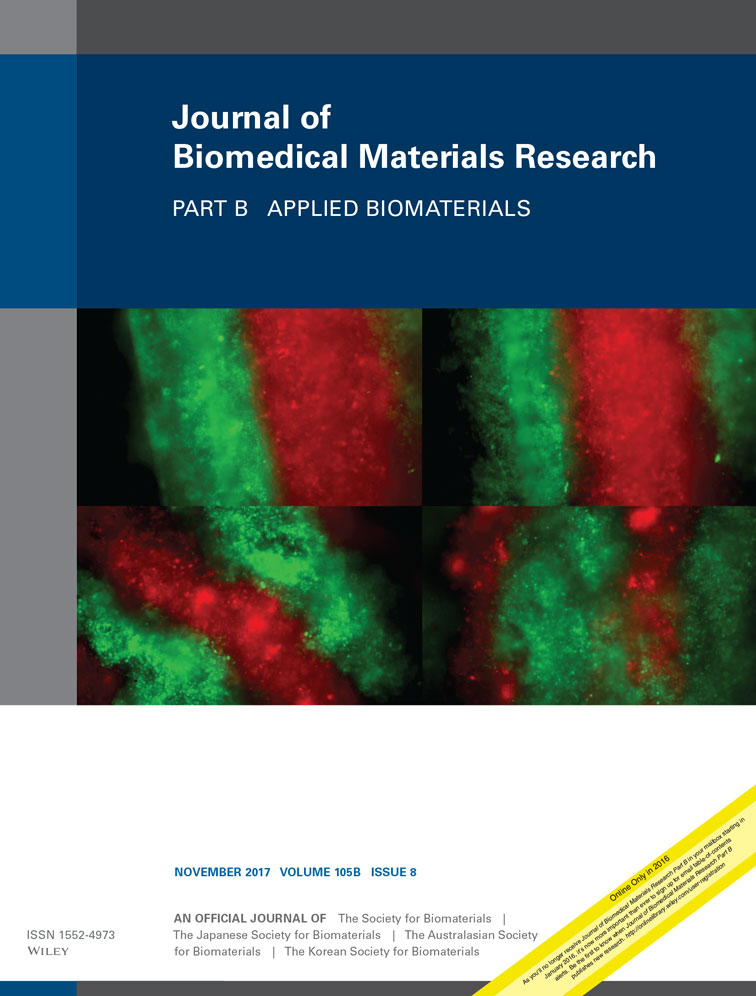Effect of wire fretting on the corrosion resistance of common medical alloys
Published 2016. This article is a U.S. Government work and is in the public domain in the USA
Abstract
Metallic medical devices such as intravascular stents can undergo fretting damage in vivo that might increase their susceptibility to pitting corrosion. As a result, the US Food and Drug Administration has recommended that such devices be evaluated for corrosion resistance after the devices have been fatigue tested in situations where significant micromotion can lead to fretting damage. Three common alloys that cardiovascular implants are made from [MP35N cobalt chromium (MP35N), electropolished nitinol (EP NiTi), and 316LVM stainless steel (316LVM)] were selected for this study. In order to evaluate the effect of wire fretting on the pitting corrosion susceptibility of these medical alloys, small and large fretting scar conditions of each alloy fretting against itself, and the other alloys in phosphate buffered saline (PBS) at 37°C were tested per ASTM F2129 and compared against as received or PBS immersed control specimens. Although the general trend observed was that fretting damage significantly lowered the rest potential (Er) of these specimens (p < 0.01), fretting damage had no significant effect on the breakdown potential (Eb, p > 0.05) and hence did not affect the susceptibility to pitting corrosion. In summary, our results demonstrate that fretting damage in PBS alone is not sufficient to cause increased susceptibility to pitting corrosion in the three common alloys investigated. © 2016 Wiley Periodicals, Inc. J Biomed Mater Res Part B: Appl Biomater, 105B: 2487–2494, 2017.




